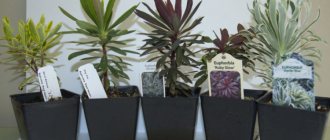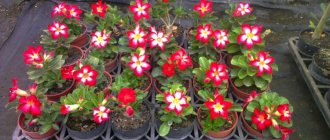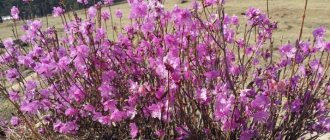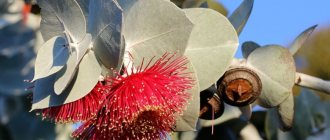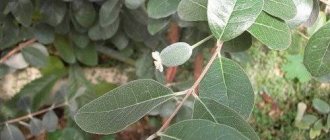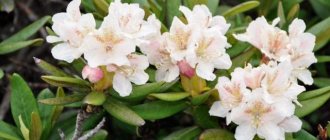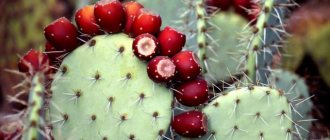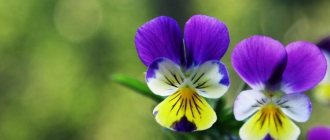Description of types of slipways and reviews of the plant
The genus Stapelia unites more than fifty species of stem succulents growing in the semi-deserts of Africa. The most striking and memorable generic characteristic of these plants is the huge five-petaled flowers, which emit an extremely unpleasant odor. The fact is that under natural conditions, the slipway does not have any pollinators other than blow flies.
Therefore, the plant can only adapt, imitating the smell of decaying meat. Despite this property, slipways are one of the most popular succulents today.
Collectors are willing to put up with an unpleasant smell in order to admire an unusual flower:
“For the sake of such flowers, I am ready to forgive my slipway this disgusting amber. It bloomed for me in May, when it was already warm enough to take it out onto the loggia. The flowers look like huge furry starfish, they open one by one - one fades, the next one opens. The opening of the bud lasts literally a few minutes, as if in fast motion. The spectacle is fantastic!” (Lyudmila, Naro-Fominsk).
In indoor culture, you can most often find several types of slips with varying degrees of odor intensity:
| View | Characteristics of the bush | Characteristics of the flower | Odor intensity |
| Stapelia grandiflora (S. grandiflora) | The shoots are low, up to 20 cm, dark green, tetrahedral, with sparse prickly teeth. | The flowers are about 15 cm in diameter. They have 5 large pointed petals, heavily pubescent, and bend back as they bloom. The hairs are short, and the petals have a pattern imitating the skin of an animal. The color is burgundy, turning brown as the flower ages. | Moderate to strong. Intensifies when touching the flower. |
| Stapelia glanduliflora (S. glanduliflora) | The shoots are low, up to 15 cm, pale green, tetrahedral, with sharp teeth. | Flowers on long drooping stalks are pale green. They are medium-sized in diameter, up to 5 cm. They have 5 greenish-yellow petals with reddish strokes, completely covered with long white glandular fibers. | Moderate |
| Stapelia variable (S. mutabilis) | Shoots up to 15 cm long, tetrahedral, dark green, with strong sharp teeth directed upward. | The flowers are large, up to 12 cm in diameter. The petals are not completely separated; in the center of the open flower there is a noticeable crown in the form of a round ridge surrounding the pistil and stamens. The color is pale pink, with a “meaty” pattern in the form of dark strokes imitating meat fibers. Pubescence - along the edges of the petals, burgundy. | Strong |
| Giant stapelia (S. gigantea) | Shoots up to 30 cm long, tetrahedral, bright green, with frequent non-thorny teeth. | The flowers are very large, can reach 30 cm in diameter. The petals are very pointed, forming a corolla in the shape of an open bell. The color is pale yellow, with a pattern in the form of burgundy strokes. The pubescence is weak, light, the length of the villi increases along the edges of the petals. | Weak |
The growing popularity of slipways stimulates breeding work aimed at breeding cultivars with a less pronounced unpleasant odor.
In addition, sometimes you can find on sale the natural species Stapelia flavopurpurea (golden-purple stapelia), the small bright yellow flowers of which exude a quite pleasant aroma of beeswax.
When in bloom, slipway flowers resemble a starfish, the resemblance to which is enhanced by the presence of fibers on the petals. However, getting these plants to bloom is not easy, and many gardeners have been growing stapelias for years as a regular leafless succulent like aloe.
Popular types of culture
Among the representatives of the extensive genus Stapelia, only six species of plants are used for growing at home. It is noteworthy that only two of them stand out with large, showy flowers. The rest are captivated primarily by the original shape of the branching stems framed by an openwork edge.
Stapelia grandiflora
A plant with spectacular large flowers and beautiful glossy shoots. The fleshy stems of the plant have a distinct diamond shape. Young shoots with a glossy surface, initially colored light green, over time acquire a rough structure with a coral-silver coating.
Stapelia grandiflora
Large buds of the succulent when in full bloom reach a diameter of 16 cm. They have the shape of wrinkled stars with sharp rays, crowned with a miniature crown. Light petals with chocolate and burgundy spots, bordered by the finest eyelashes, create a slight glow effect. The flowering of the buds lasts 1.5-2 weeks. During this period, they spread a pronounced smell of carrion and rot in the area.
Stapelia gigantea
Stapelia gigantea is another large-flowered species. The shoots of the plant, reaching a length of 18-20 cm, have pronounced edges framed by whitish flat needles. The thickness of the fleshy shoots is about 3.5 cm.
Stapelia gigantea
The diameter of the triangular-shaped flowers in bloom reaches 30 cm. The petals have a contrasting graphic coloring: dark red dots and strokes on a white background. The edges of the elongated, pointed petals are bent outward and covered with the finest hairs. During the flowering period, the buds do not smell anything.
Stapelia variegata
Stapelia variable or variegated is a highly decorative indoor species. The culture received its name for its ability to create unique bud colors. The patterns are inimitable, like fingerprints, created from thousands of stripes, dots and spots. Flower growers note that among representatives of this species it is almost impossible to find two buds with the same color.
Stapelia variegata
The stems of the plant can also take an unusual shape. They can be straight and curved, shortened and highly branched. The edges of the stems are covered with rows of denticles.
The height of the formed bushes varies between 5-10 cm. Up to five buds can bloom at the same time. Flowers are interesting not only for their colors, but also for their surface structure. The outer side of the triangular petals has a smooth surface, while the inner side has a wrinkled surface.
Stapelia mutabilis
Stapelia variablea is a spectacular succulent that looks like exotic representatives of marine fauna. The plant is formed from thick, relatively rigid shoots 15-17 cm long, the edges of which are framed by large teeth.
Stapelia mutabilis
The main decoration of the “thorny bushes” are massive flowers resembling starfish. The diameter of the buds at the peak of flowering reaches a diameter of 7-9 cm. Five wrinkled rays with pointed edges extend from the core of the bud. The picture is complemented by the original variegated colors in a brown-red palette. A scaled pattern of asymmetrical spots and dashes is duplicated on the crown of the bud.
Stapelia asterias
Stapelia star-shaped is a succulent, the blooming buds of which, in appearance, are incredibly similar to an invertebrate inhabitant of the water element - a starfish. Brown-red “stars” with five pointed rays are covered with the finest pink hairs. The edges of the petals bent downward are framed by translucent white eyelashes. Due to this, the effect is created as if the bud is covered with a fur blanket. The diameter of the “stars” planted on long stalks reaches 8-9 cm. During the flowering period, up to three buds can bloom simultaneously on one plant.
Stapelia asterias
The fleshy stems of the plant are initially green, but when exposed to intense light they acquire purple hues. Their height is about 20 cm. The blunt edges are covered with small teeth.
Stapelia flavopurpurea
Stapelia golden-purple is a low-growing succulent up to 10 cm high. The diameter of the spreading bush can reach 30-40 cm. Numerous shoots have blunt edges. White stripes along the edges favorably emphasize the emerald hue of the stems themselves.
Stapelia flavopurpurea
During the flowering period, the plant is decorated with small star-shaped flowers with flat, strongly dissected corollas. The surface of the white petals is dotted with purple wrinkles. Up to three buds can bloom at the same time. It is noteworthy that the aroma of blooming buds is quite pleasant. It reminds me of the smell of church wax.
What does stapelia look like: description of the plant
Stapelia belongs to the Kutrov family, which is a type of succulent. This is a tropical species, found naturally in the southern latitudes of Africa.
Stapelia gigantea
A perennial bush with tetrahedral fleshy shoots reaches a height of 60 cm. Soft thin shoots are located on the ribs of the stems. The color of the crown is dark purple; due to the lack of leaves, the flower is sometimes confused with a cactus.
Large five-pointed flowers up to 30 cm in diameter bloom at the tops of the peduncles. During flowering, the slipway emits an unpleasant odor that attracts insects.
Interesting! In the wild, the plant is found only on the African continent.
Plant characteristics
Stapelia belongs to the genus of perennial succulents and the Kutrov family. In nature, it is found in semi-arid regions of South and South-West Africa. The succulent has an interesting structure. Numerous fleshy stems branching from the center of the rosette have a tetrahedral shape. Each face is framed by thin protruding whitish teeth. “Coral Reef” annually increases the number of spreading, twisting stems, forming original “bundles” of a dozen shoots.
The color of the stems themselves, depending on the lighting, can include shades of bluish-green, emerald and even reddish-violet. The plants are completely absent of leaves.
The main decoration of the slipway is a flower. The buds that form at the base of young shoots are planted on graceful bent stalks. Flowers, the diameter of which sometimes reaches 30 mm, can be either single or paired. The corolla of the buds has the shape of a five-rayed star, in the center of which sits an openwork crown rising above the petals. The petals ending at the top create that inimitable effect, giving the flower a perfect star-shaped shape. The buds open slowly. The beginning of the fascinating process will be marked by a loud bang. The color palette of the petals is no less impressive. Cherry and brown spots and strokes on a light background, combined with an unusual texture, create the illusion of the color of outlandish mollusks and the luxurious fur of fairy-tale animals.
With all the advantages of this amazingly beautiful flower, stapelia has a single, but significant drawback - a disgusting smell. During the flowering period, it spreads a putrid odor throughout the area, very reminiscent of the stench emanating from spoiled meat. This is how the plant attracts pollinating insects. For this reason, the famous German thinker and philosopher Goethe called the stapelia the most beautiful, but at the same time monstrous flower in the world.
The maximum height of low-growing plants growing in natural conditions does not exceed 40-50 cm. Slipways with a height of 10-20 cm are grown as indoor crops.
Common varieties
There are about 100 species of slipway in nature.
The following are the most common:
- Stapelia grandiflora grows up to 15 cm in length and has rows of serrations on the edges of the stems. On long stalks, 2 huge flowers appear simultaneously, in the shape of stars. The inflorescences of stapelia grandiflora have a dark red hue, the curved petals are dotted with burgundy fibers, which is why the flowers look fluffy.
- Stapelia gigantea is so called because of the impressive size of the flower - up to 35 cm in diameter. Stapelia gigantea looks like a bush of erect stems resembling fleshy sticks up to 20 cm high. The flower has the shape of a five-pointed star of yellow color, covered with red hairs.
- Stapelia variegata or variegata reaches a height of only 10 cm. The green branches are inconspicuous, with denticles on the edges. During one flowering, up to 5 large flowers appear, which hang on stalks. The petals are pale yellow with small burgundy spots that give the stapelia a tiger-like hue.
Caring for the varieties is equally unpretentious. When the bush rejuvenates, the plant can bloom annually.
Stapelia grandiflora
Star-shaped
The plant is short, 20 cm. It has green stems that can change their shade to red in the sun. The flowers are dark red with small yellow lines. They are located on long peduncles that arise from the base of the stems.
Gigantic
The bush grows to a height of 20 cm. The plant received this name due to its huge flowers, the size of which is 35 cm. Their color is pale yellow, and they are covered with pink fibers. This type of slipway does not have such a nasty smell as other representatives of the culture.
Motley
Variegated slipway is a low bush that grows up to 10 cm . Its stems are green, slightly tinged with red. The flowers are yellow, have dark spots, and are covered with villi on one side.
Ferruginous
Its height reaches 15 cm. The plant forms a compact bush, consisting of green leafless shoots directed upward. The flowers are green, covered with white hairs.
Golden purple
Golden-purple stapelia is presented in the form of a low bush . The bush consists of green stems that change their color to purple in the sun.
The flowers of the golden-purple stapelia are quite unusual, as they have thin green petals and a pink fluffy ball inside.
The aroma of the flowers is reminiscent of wax, making growing the plant doubly pleasant.
Desmetiana
Desmetiana is a leafless herbaceous succulent that is 30 cm tall . It has a fleshy stem consisting of four sides. The flower is purple in color and has transverse stripes. Eyelashes are located along the edges.
Desmetiana petals have a particularly impressive appearance due to the presence of tubercles on them. The pinkish hairs make desmetiana a striking variety.
Despite the fact that it smells very faint, the aroma is very pleasant and not offensive.
Large-flowered
Compared to other species, this plant has shoots not with 2, but with 3 sides. Large-flowered stapelia is distinguished by lanceolate petals . The color of the flowers is pale yellow, and the surface is covered with purple hair.
Getlefi
This type of slipway with ascending stems that taper towards the base. Getlefi has creeping stems, a gray-green tint and straight leaves . The flowers are drooping, and the buds are pointed and ovoid in shape. They are blunt at the base.
There are sepals and pedicels, as well as a cream-colored corolla measuring 10-12 cm. The corolla lobes are purple, their wrinkles are yellow.
Getlefi are rarely monochromatic. The shape is pointed, in the form of an ellipse, and inside there are sparsely drooping edges. The corolla and lobes are drooping in the center and have a purple tint and hairs.
The crown is also purple, 5 mm high, and in the middle there is a deep groove running in the longitudinal direction. The leaves are pointed at the top and the hairs are slightly stiff. They are erect and have a fused appendage along the entire length of the stem.
Khirsuta
Khirsuta is a type of stapelia, the flowers of which are less than 10 cm. They are brown-violet, have transverse stripes of yellow shades and purple fibers.
The shoots of the plant are bare, they are up to 15 cm in length. At the bottom there are teeth directed upward. The pedicels are quite long - they are strewn with ovoid petals along the edges.
Due to the presence of a large number of fibers, the variety of khirsut is very similar to velvet .
Changeable
Its stems reach a height of 15 cm. The color of the petals on the flowers is light green, and dark spots are scattered over their surface.
Is Stapelia poisonous?
The shoots of the slipway contain milky sap, which is poisonous to insects. As for a person, he may only experience irritation of the mucous membranes.
It is better to keep the flower away from small children, as they have the ability to taste everything. If the baby manages to eat a piece of the plant, his stomach will begin to ache and nausea may occur. Parents should take their child to specialists as soon as possible. Adults must wear gloves when working with the plant.
Features of home care
The quality of life of the crop and the frequency of flowering depend on the amount of heat, light and moisture. After the flowers fall off, the stems on which they were located must be removed. This is done because the buds will no longer form on them, and pruning has a beneficial effect on the development of the bush.
Temperature
It must be taken into account that the stapelia succulent is a crop that is subject to seasonal changes.
The heat level in the room should be selected depending on the time of year:
- In summer, the room maintains +22..+26, keeping it on the balcony has a beneficial effect.
- The temperature in winter varies from +10 to +14 degrees. It is possible to keep the pot within +7 degrees for a short time.
Attention! The flower does not like sudden changes in temperature. During the flowering period, buds may fall off due to sudden changes in heat. In winter, the room should not be hot.
Lighting
The flower requires a lot of light, but if the stems are exposed to direct sunlight, it can get burned. Therefore, on the south side the flowerpot needs to be shaded.
If the stem turns from green to burgundy or purple, this indicates oversaturation of sunlight and the destruction of chlorophyll in the plant cells.
In winter, it is recommended to turn the pot towards the sun, changing the lighting angle. This is done to avoid the stems tilting to one side.
Excessive light reflects on the shade of the stems
Watering
In summer, moderate watering is provided - once a week. The substrate needs to be checked for moisture; if the soil is dry, water the flower.
In winter, the amount of moisture is reduced. In cool rooms, the plant is not watered at all, especially in December - January.
Humidity
Succulents do not like excess air humidity. There is no need to spray the crown of the slipway; care should be minimal.
A warm shower in the bathroom won't hurt, but this should be done once a year in the summer to wash away dust from the branches.
Priming
The crop is not demanding on soil quality. It is enough to plant the flower in cactus soil, which is sold in garden stores.
Prepare the composition yourself by mixing coarse sand and turf soil in a 1:2 ratio. Before planting, the substrate must be sterilized.
Feeding
In summer, the plant is fed with cactus fertilizer once every 2 weeks. Potassium preparations increase the flower's resistance to disease. In winter, the crop is not fertilized.
Important! Nitrogen fertilizers promote the growth of new branches, but have a bad effect on the buds. During flowering, the plant is not fertilized with nitrogen.
Rules for planting and transplanting
The plant is not picky about the composition of the soil mixture, but fatty mixtures with a high content of humus should not be used. Stapelia will be satisfied with ordinary soil for cacti.
The best option for planting is sandy loam with a pH of 5.5-7. Good drainage is required. Composition of the homemade mixture: turf soil (2 parts), quartz or river sand (1 part).
The pot should not be high, but wide; the root system of the stocks, unlike many plants that store moisture in the stems, does not go deep and is not active.
Fill 1/3 of the pot with drainage. When replanting, the plant is rid of old shoots in the center; they do not form flower buds.
After transplantation, the slipway does not need to be watered for 5-7 days to avoid the harmful effects of moisture on injured roots. As soon as this period has passed, the first watering is carried out.
Mature plants that feel well do not need to be replanted annually; it is enough to refresh a couple of centimeters of soil by removing the top layer and replacing it with fresh soil. Old shoots are removed.
Basics of competent care
Succulent is one of the low-maintenance plants. But to maintain the decorative qualities of the slipway when maintaining it at home, a number of basic points should be observed.
Soil composition
The succulent is grown in containers with low, wide sides. Special soil mixtures intended for cacti and succulents are used as a nutrient substrate. They contain a high concentration of sand, due to which they have a loose structure and allow moisture and air to pass through well.
When making your own soil mixture, the main component is turf soil, which is mixed with sifted sand in a 2:1 ratio. To minimize the risk of increased soil moisture, crushed charcoal is added to the composition. Its percentage in the mixture should not exceed 8%.
The presence of coal in the composition is advantageous in the sense that, like a sponge, it absorbs excess moisture, and as the soil dries, it releases it back.
Vermiculite and perlite also have a high coefficient of water absorption.
The succulent is afraid of transplants, so this procedure should be carried out only in exceptional cases. At a normal growth rate, the bushes are replanted every 3-4 years. The procedure is performed in several stages:
- The bottom of the new container is lined with a drainage layer of broken brick, fine gravel or expanded clay. The thickness of the drainage “cushion” should leave 1/3 of the soil composition.
- The pot is half filled with nutrient substrate.
- Taking care not to damage the earthen ball, the plant is removed from the old container and placed in a new container. At the same stage, old, broken and drying shoots are removed.
- The roots of the bush are sprinkled with earth, leaving a rosette on the surface.
- The first watering is carried out 5-7 days after transplantation.
If desired, the transplant can be replaced with a more gentle procedure for rejuvenating the earthen coma. To do this, carefully remove the top layer of soil, replacing it with a new nutrient substrate, and cut off old woody shoots.
During the growing season, the crop needs regular feeding. To do this, once every two weeks during watering, complex fertilizers intended for cacti and succulents are applied. In the autumn-winter period, fertilizing is not carried out.
Light mode
Among succulents there are no shade-loving plants. Stapelia is no exception. "Starfish", which naturally grows in open sunny areas, when bred as a domestic crop, needs a sufficient amount of sunlight. The only thing worth considering is that starflower can get burned when placed in the sun. Lesions appear as changes in the shade of the stems. Therefore, when placed on a southern windowsill on sunny summer days from 11 a.m. to 3 p.m., it is still recommended to shade the plant a little. For this purpose, it is convenient to use a veil, a sparse mesh or a tulle curtain.
In winter, when new buds are being formed, it is worth taking care of additional lighting for the succulent. The lighting should be organized so that the plant is evenly illuminated from all sides. Additional lighting with energy-saving fluorescent lamps will help prevent stems from stretching.
Humidity
Stapelia, like all succulents, demonstrates a special relationship with moisture. It can survive for a long time without watering because it accumulates large portions of moisture in the stems. Under natural conditions, during dry periods, starflower does not die due to its ability to reduce transpiration. The effect is achieved due to the presence of a waxy coating on the stems. Evaporation of moisture at night occurs through stomata, located in the upper layers of the epidermis of the stems. During the day, the stomata are completely closed.
Water the slipway, focusing on the temperature and humidity of the surrounding air. The main indicator is the degree of drying of the substrate in the pot. The soil should have time to dry completely and also remain in this state for about 5-7 days.
During periods of hot weather, reduce the time between waterings. In dry summer times, the soil should remain dry for only 2-3 days.
In the winter months, the plant can do without watering at all. But when kept at home, when the ambient temperature in winter does not fall below +14°C, watering is carried out once a month.
Errors and solutions
The main mistakes are obvious to the eye: the plant does not bloom or has elongated, ugly stems.
There are several reasons for the lack of flowers:
- Wintering is too warm, there is no rest period.
- Stress: excessive watering, lack of light, excess fertilizer.
- Lack of potassium fertilizers, excess of nitrogen fertilizers.
- Flood, too dense soil, poor drainage.
If the stems are elongated, the slipway does not have enough sun. You need to move it to a lighter window sill, add lighting, or organize cooler conditions.
Mistakes in caring for slipways are rare; growing this exotic plant can be safely recommended to beginners. And experienced flower growers will not pass by. The plant is very original and attracts attention. The benefit of a flower is not only its decorativeness and unusualness. Astrologers believe that slipway expels negative energy from the apartment.
Propagation of slipweed by cuttings
Stapelia cuttings with roots photo
- To plant a slipway without roots directly into the ground, cut the cuttings using a sharp, sterile knife.
- Treat the cut area on the main plant and cuttings with crushed activated carbon.
- For several hours, the cuttings are dried in a shady place, then planted in soil made of coarse sand with the addition of a small amount of crushed peat.
- After rooting, the plant is transplanted into soil made of light turf, leaf soil and coarse sand in equal proportions, using a pot with a diameter of about 7-10 cm.
Growing stapelia from seeds
Stopelia seeds photo What the Stopelia fruits look like
To collect seeds, it is necessary to wait for the fruit to ripen for more than a year. Seeds are sown in bowls in light sandy soil, waiting for germination within 3-4 weeks. Stapelia grows slowly, so you need to be patient and try not to overdo it with watering: the ground should be only slightly damp, but not wet.
Slipway seedlings 4 months old photo
The grown seedlings are planted in separate cups, using soil as for cuttings. After a year, using the transshipment method, they are transplanted into larger pots.
Methods of culture propagation
The crop is propagated by dividing the rhizomes during transplantation and by cutting stems. Old shoots are used for cuttings. The stems are cut in half, forming cuttings 4-6 cm long. The planting material is pre-dried for 3-5 days.
Root the cuttings in moistened sand. Clean water is not suitable for these trees - the planting material will simply rot. Rooting of stem cuttings in wet sand usually lasts 10-15 days. The main task at this stage is to maintain optimal humidity conditions.
The ideal breeding period is from early spring to late summer. The autumn-winter period is not suitable for the reason that in conditions of insufficient light and heat, the crop simply rots in damp soil.
Flowering slipway
Florists cultivate the plant to produce beautiful flowers. An interesting fact is that diseases and pests have virtually no effect on the flowering process. Difficulties with the fact that flowers do not form arise due to sunburn and waterlogging of the soil.
Flowering slipway
Experts who work with exotic plants can also answer the question of why the stapelia does not bloom or withers.
Reasons why it doesn't bloom
The lack of flowering process may be due to non-compliance with the temperature regime. If in the summer the indicators decrease, then the growing season slows down. Also, insufficient sunlight leads to a negative process. In the shade the plant does not form flowers.
Insect pests and diseases
The most famous pests include aphids, spider mites, and root scale insects. When you notice an insect attack, you need to buy insecticides. The earth is watered with the substance until completely moistened. The manipulation must be repeated up to two times with an interval of 10 days.
Diseases appear only when the flower is not properly cared for—waterlogging of the soil. As a result, the flower is attacked by a fungus. How to help the plant? First you need to cut the cuttings, and throw away the roots that have rotted. When dark spots appear on the slipway, the plant can no longer be saved.
Stapelia contains a toxic milky sap, like marigold. Caring for the Stapelia plant should be done with gloves. Place the pot with the plant in a place where neither a child nor your pet can reach. Stapelia, like any plant, requires proper care. Therefore, water correctly, apply fertilizers, monitor the room temperature and humidity percentage, and create a drainage system. And then the stapelia flower will delight you with beautiful buds and flowers every year.
Sources
- https://rasteniya.pro/stapeliya-uxod-v-domashnix-usloviyax-7-vazhnejshix-pravil-razmnozhenie-foto-sortov/
- https://greensotka.ru/sukkulenty/stapeliya-tsvetok.html
- https://dacha.expert/domashnie-rasteniya/sukkulenty/stapeliya
- https://dacha.expert/domashnie-rasteniya/sukkulenty/stapeliya/vidy-s.html
- https://MrDachnik.com/stapeliya
- https://dacha.expert/domashnie-rasteniya/sukkulenty/stapeliya/osobennosti-i-nyuansy-uhoda.html
- https://chto-posadit.ru/tsvetok-stapeliya-uhod-v-domashnih-usloviyah-razmnozhenie-cherenkami-kak-zastavit-tsvesti/
- https://pocvetam.ru/komnatnye-rasteniya/kaktusy/stapeliya-cvetok-primery-razmnozheniya-cherenkami-i-uxoda.html
- https://GardenGround.ru/sukkulenty/stapeliya/
[collapse]
Indoor flower stapelia - growing and care
Like most succulents, the stapelia plant requires virtually no care, making it suitable for inexperienced or busy gardeners. But there are some subtleties in caring for it, they depend on the time of year. Key points when growing:
- Comfortable temperature range is +20-27°C in summer and +12-15°C in winter. From late autumn, the plant needs to observe a dormant period. It is recommended to reduce the temperature and reduce watering. A suitable place during the dormant period for the starfish from late November to early March is a glassed-in balcony. There, with limited watering, the plant will rest well before the new season.
- Southern slipway requires good lighting with plenty of direct sunlight, otherwise its stems will become thinner. On the hottest days, it is better to shade it so that burns do not appear on the shoots. Often, when asked why stapelia does not bloom, the answer lies in the lack of lighting or nutrients.
- The “starfish” itself tells the owner if there is too much sunlight for it - the tops of its shoots begin to turn red.
- With an uneven supply of light, the plant develops unevenly - it turns its shoots towards the sun's rays. As a result, the bush becomes lush on one side and bare on the other. To prevent this, you need to systematically rotate the bowl around its axis. But during flowering, in order to avoid the plant dropping buds, it is better not to carry out this procedure.
- Air humidity is not important for the “starfish”, which is accustomed to African conditions; it feels good in a dry atmosphere.
- The main pest that threatens the plant is the mealybug. He is not averse to eating the fleshy stems of a succulent. The beetle should be washed off with water, the plant should be irrigated with an insecticide and placed in a plastic bag for several days.
Planting a slipway
The plant has an underdeveloped root system and needs a wide, shallow pot. One third of the container should consist of drainage - expanded clay, pieces of plastic, foam. It is necessary to prevent waterlogging of the soil, which can lead to rotting of the trunk. The soil for the plant requires light, breathable and loose. The soil for planting can be prepared from two parts of turf soil and one part of washed sand. It has good air and water permeability and neutral acidity.
Stapelia - watering
When asked why the leaves and shoots of the stapelia have become soft and wrinkled, the answer may be an excess of moisture, causing the roots to be damaged by rot. The plant cannot stand this - the stems turn pale, become limp and begin to disappear. From March to October, the slipway is watered moderately (approximately once every two weeks) - the soil should dry out to the very bottom of the pot between waterings. At one time, the plant is flooded abundantly, but stagnation of water should not occur, otherwise the roots of the “starfish” may disappear.
Stapelia cactus - feeding
Mineral fertilizers have a good effect on the stapelia flower; care at home involves spring and autumn feeding - only during the period of plant activity. It is fed at this stage every two weeks with special mixtures for cacti or succulents in doses recommended by the manufacturer. Suitable mixtures are Agricola, Florovit, Pokon, Bona Forte. In winter, the plant is not fed. Stapelia responds well to potassium fertilizers, thanks to which it develops resistance to disease.
Stapelia - reproduction
The plant can be propagated in three ways:
Seeds.
They appear in fruit pods on the “starfish” throughout the year. The grains are collected, they are equipped with tufts of fluff that need to be removed. The seeds are kept for half an hour in a solution of potassium permanganate, sown in a separate container in light soil, and after 3-4 weeks they germinate. After picking the trunk, they are planted in 6 cm pots.
The composition of the soil is as follows: turf, leaf, sand (1:2:1), plus 1 part of charcoal with lime (1:8). The next year, young shoots are transplanted into 7 cm pots. Starfish grow quickly. We must be prepared for the fact that the young plant may not be similar to the parent, because slipway crosses well. In the first year of life, the earthen coma should not be allowed to dry out. The plant begins to bloom from seeds in the third or fourth year of life.
https://fb.ru/article/449179/stapeliya-uhod-v-domashnih-usloviyah-razmnojenie-vidyi-i-foto
https://chvetochki.ru/stapeliya/
https://womanadvice.ru/stapeliya-tonkosti-uhoda-za-ekzoticheskim-cvetkom
